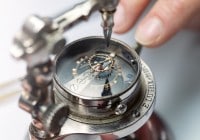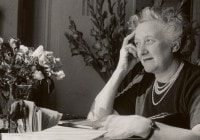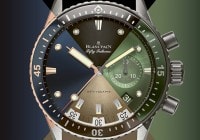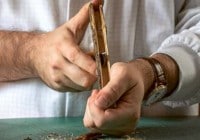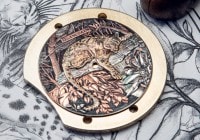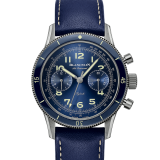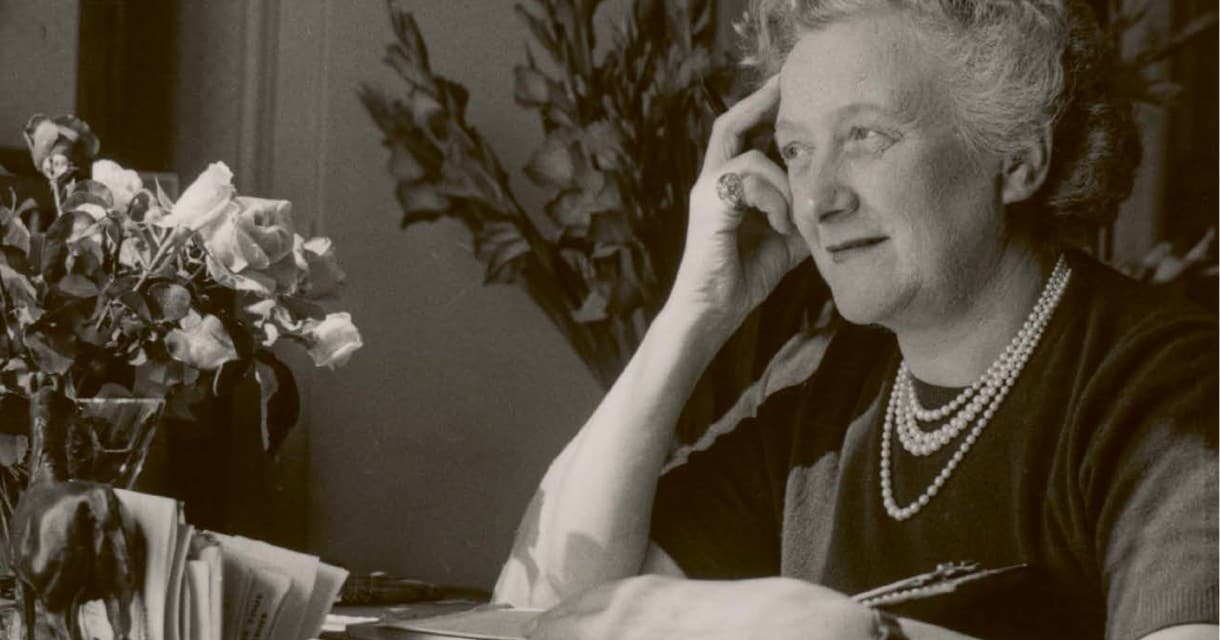
Search in Issues
Chapters
List of parts
Chapter 1
Blancpain’s Le Brassus VINTAGE Workshop
Marc A. Hayek observed “These timepieces have to live forever”. Blancpain’s special vintage workshop in Le Brassus is dedicated to their service and restoration.
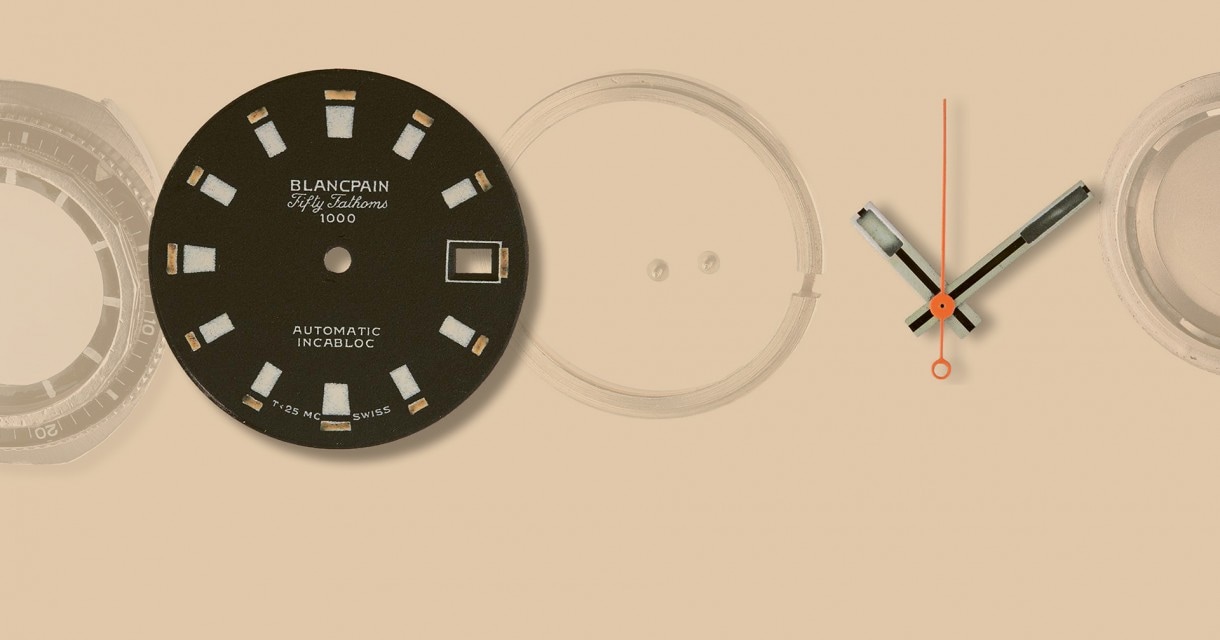
At the age of 15 Bert van der Waal made a decision that he could not have imagined at the time would carry forward long into his life. As his parents had gifted a motorbike to his older brother, they offered to let Bert choose something special for himself. Already with a budding passion for diving, he asked his parents to accompany him to a local dive equipment shop. What he selected was a Blancpain Fifty Fathoms, in particular, a Barakuda model.
That timepiece became a constant companion both personally and professionally. His underwater avocation led Bert to join the Dutch military as a diver. Although the military supplied all of his other equipment, he exclusively used his personal Fifty Fathoms as his underwater timing instrument. Following his years with the military, came a career as a professional diver with an underwater salvage and repair enterprise. As before, that same Fifty fulfilled the vital role of timing his dives.
The robustness of his Fifty companion was extraordinary. A full forty-five years of constant use passed between that first day with his parents in the dive shop and the first service. Regrettably entrusted to a local watchmaker who was not a vintage watch specialist, the movement was damaged during the service. Bert thereupon sent his Barakuda-style Fifty to Blancpain.
As Blancpain’s CEO Marc A. Hayek brought the Fifty Fathoms patrimony back to life beginning in 2003, he immersed himself in its history and bonded with these vintage pieces. He knew at once that an integral part of reviving the Fifty Fathoms in the modern collection was servicing of the vintage pieces. To jump-start the formation of the vintage workshop, he was able to purchase a stock of components from a venerable old watchmaker who himself had acquired them from other independent watchmakers in Switzerland and France. The next step was identifying a team of Blancpain watchmakers who had a passion for the vintage pieces and the burning desire to discover the secrets of the past models. They were also selected with one other quality in mind: a deep understanding of the issues and choices regarding the degree of intervention on aesthetic matters, not generally part of the service of modern pieces but which are central questions during vintage servicing. As well, these watchmakers had to possess the increasingly rare skills of component fabrication by hand. What followed was the creation of a special dedicated workshop in Le Brassus with a focused team to practice this unique craft of vintage service. Taking account of the expertise required, it is perhaps not surprising that this vintage workshop was located in a building attached to the Le Brassus complicated watch workshop. It was this workshop that was the destination for Bert’s Fifty.

Every timepiece that arrives for service in the vintage department undergoes a MULTI-DIMENSIONAL TECHNICAL ANALYSIS .
To get a feel for this unique specialty of vintage restoration, let’s follow Bert’s Fifty and a few other examples as they progress through the workshop.
When Bert’s timepiece arrived in Le Brassus, it underwent what is standard for all arrivals: a multi-dimensional analysis. Case, dial, and – following opening of the case back – movement, were all carefully examined to ensure that the watch was genuine. In the case of a negative finding, the watch would be returned to its owner. In Bert’s case the watch was determined to be authentic. There is one additional step that is part of this initial examination for all Fifty Fathoms watches: a radiation test. Recall that many Fifty Fathoms were commissioned by military organizations which specified that a radioisotope (initially radium; later replaced by Promethium 147) be used on the dial, bezel and hands in order that a diver could read the watch in darkness. Indeed, this was the reason that Blancpain introduced a series of Fifty Fathoms that bore the legend “No Radiations” on the dial to reassure those owners that the watch was not done to military luminosity specifications. In sharp contrast to the military’s radioactive compounds, for these watches tritium was employed which had only nominal radioactive properties. Measuring radiation emissions is important at this early stage as it determines whether or not the dial and hands can be restored. If the test shows that radioactive compounds are present, then the dial and hands must be left as they are without restoration. As Bert’s watch was most assuredly a civilian model purchased from a local dive shop, as expected, the radiation test showed only the presence of tritium, with its trivially low level of radioactivity.
The technical diagnostic analysis yields a report replete with photographs of the case, dial (including hands), case back and movement. What’s triggered next are decisions which bring the watchmaker and the owner into close contact. How far should the restoration go? Is the case scratched (and certainly a diving watch subjected to both military and professional diving use for nearly a half century will exhibit scratching)? To what degree should the scratches be addressed? Blancpain’s philosophy is to recommend minimum intervention. Polishing to remove all scratches would likely go too far and dull or even remove engravings on the case back and, perhaps worse, alter slightly the shape of the case. Virtually all owners of vintage pieces agree with this light-touch approach. The same thinking applies to the dial. Gentle cleaning is usually the order of the day. To the extent that markings may have slightly deteriorated because of age, they are left alone. Repainting would not only rob the watch of the patina of age, but it would destroy its legitimacy as a vintage piece. These issues and the choices are always presented to the owner for decision.
All of these questions were teed up in the examination of Bert’s watch. The case back was found to have deep scratches. It also bore the inscriptions “Blancpain Stainless Steel Swiss” “Super Waterproof-Shock Protected-Automatic-Antimagnetic”, and, of course, the case number. The wise course was to avoid deep polishing, leaving these important engravings essentially untouched. Like many civilian models, Bert’s Fifty Barakuda featured a date window. Examined under a microscope, the printing of the numbers on the date ring showed signs of minor pitting. After verifying that the painting was not producing debris that might create problems for the movement, the decision was made to leave the printing as is, thus preserving the vintage look.
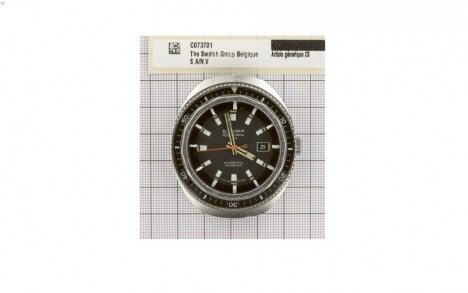
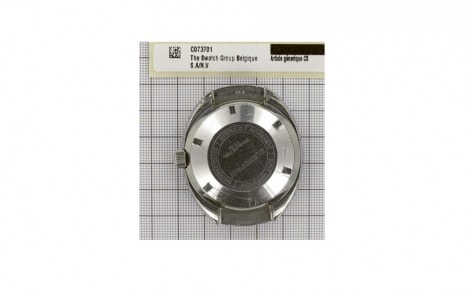

A full service must address the MOVEMENT, CASE, DIAL, CRYSTAL AND HANDS .
There was one mechanical aspect of the case that needed attention. This Barakuda Fifty, adhering to the DNA that defined the line since the first 1952 version, featured a rotating bezel for timing of the dive. The bezel ratcheting mechanism itself incorporated a fine circular spring to hold it in position. That spring had been slightly bent over its already near half century of use. Bringing it back to its original form, the watchmakers in Le Brassus carefully restored its shape by hand and verified that the ratcheting system was once again functioning properly.
Two cosmetic areas called for intervention. First was the crystal. This model of the Fifty Fathoms used thick mineral glass. Sapphire crystal, which is the norm today, would not come into general use in Switzerland until the 1990s, well after this watch was produced. The original mineral glass was badly scratched and chipped. Both of these conditions would jeopardize the water resistance and robustness of any watch after service, particularly so in this instance as this was a timepiece designed to be water resistant to 1,000 meters (and the dial indeed bears the legend “Fifty Fathoms 1000”). Thus, replacement of the mineral glass became necessary. More was involved than simply removing the old worn glass and substituting a new one. Mineral glass crystals today are fabricated in a thinner form than those from the era of Bert’s Fifty. In order to mount the new glass in a secure and watertight fashion, the vintage workshop hand-crafted a special mounting ring that would adapt the thinner new glass to the case. The second aesthetic aspect addressed was the hands. The previous poorly-done service had resulted in hands staked in a way that caused them to rub against one another, badly chipping the paint. Here repainting could be done in a way that would not detract from the vintage feel of the piece. First the watchmakers removed all the original paint and then straightened the hands (which had been deformed during the earlier service), a process done by hand. That was followed by repainting the hands and then applying SuperLumiNova®. Repainting requires more than painstaking fine brush work. The color must match the aged color of the dial. The vintage workshop stocks a range of tints that can be mixed to bring the newly painted hands into conformity with the rest of the dial.
Both the passage of forty-five years of use without service and a poorly performed service thereafter called for substantial work upon the movement. Not only did the movement exhibit corrosion, but many components needed attention. Those most seriously affected were the cannon pinion, sliding pinions and winding pinion, all of which required replacement. The balance pivots also needed repolishing, as did many screws.
In many instances, movement restoration calls upon vintage watchmakers to employ the rare skills of component-making. One example: an early Fifty Fathoms sold by one of the prominent French watch shops of that time, LIP, which bore the LIP logo on the dial along with, of course, the Blancpain signature. Not only did that watch require replacement of the mainspring, but in addition several screws including the large screw for the barrel’s rochet (the element attached to the center arbor and which winds the mainspring). As well, two other components, needed to be fabricated from scratch. The mainplate of the watch had one non-jeweled pivot (a form of bearing for a shaft) which over time had become so worn that its diameter had enlarged somewhat and had taken on a slightly oval shape. The watchmaker’s solution was to enlarge the hole, which of course restored its round shape, and to fabricate an insert (called a bouchon) that would have an inner diameter equal to that of the size of the original pivot. Working with a copper beryllium rod, the watchmakers cut it to the correct length, drilled the center hole using a lathe (itself a vintage machine) and then painstakingly polished the newly made collar. The second component which needed to be made anew was a washer that was likewise made from metal stock.

Repainting the luminous portion as the last step in hand restoration.
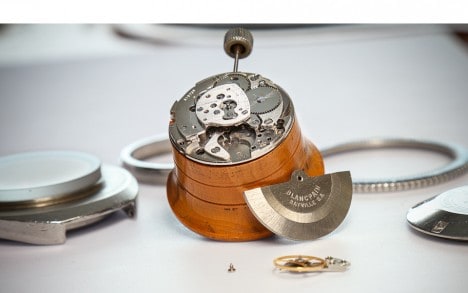
Re-assembly of the movement after cleaning and component restoration.
Screws of unique and different shapes are also frequently fabricated by hand. Witness the recent service of the rarest Blancpain model from the 1950s, the Air Command chronograph. Its movement employed screws with non-round heads (called “eccentrics”) for fine adjustments of the chronograph elements. When the watch is assembled, these screws are used to set the engagement of the wheels in the chronograph gear train and the operation of the brake. 1 The eccentric shape allows the watchmaker to set precisely the spacing of these critical components by turning the screw head into different positions. For the service on this vintage Air Command, badly damaged eccentrics were replaced with ones hand-made by the watchmaker in the vintage workshop.
1 The Air Command movement uses a horizontal clutch to drive the chronograph. When the chronograph is started, wheels are pivoted to engage a finely toothed wheel attached to the chronograph seconds hand. The engagement of the wheels in this train must be precisely set. If the teeth engage too deeply, the watch will stop; if the engagement is not deep enough, the chronograph seconds hand will flutter. Likewise, when the chronograph is started and stopped, the brake must disengage and re-engage at precisely the right instant. These are all controlled by the careful setting of the eccentric screws by the watchmaker.
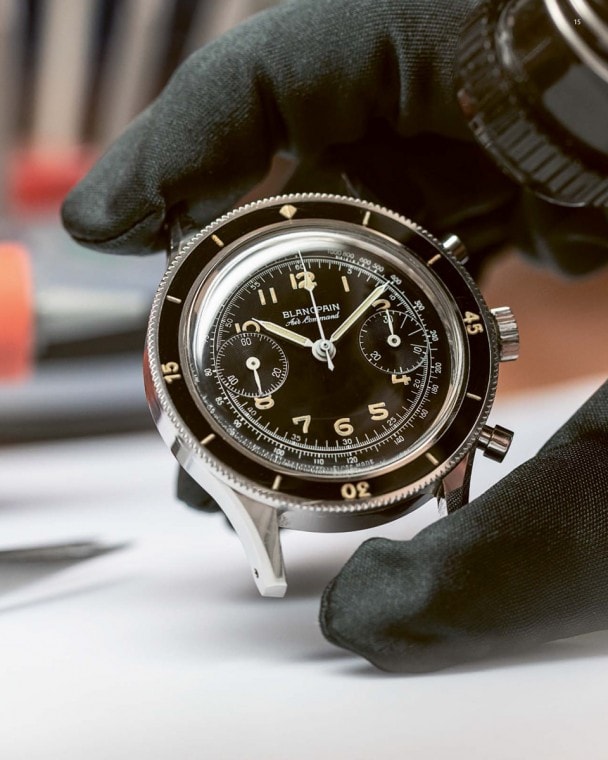
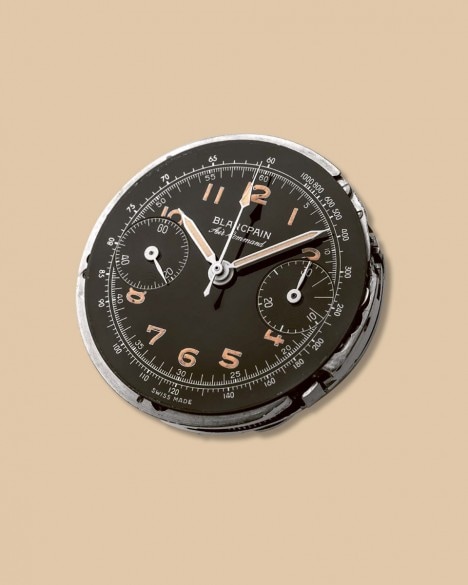
The vintage Air Command.
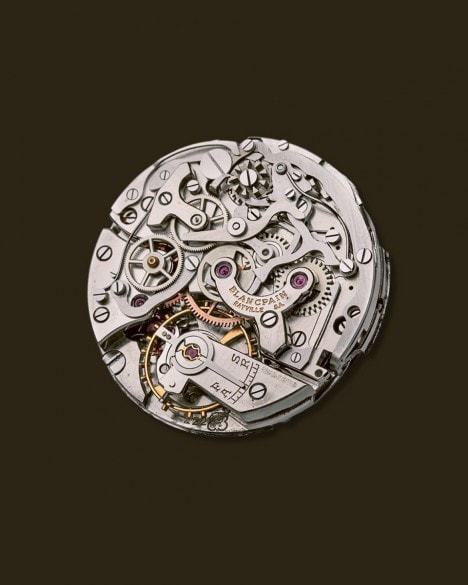
The WORLD’S SMALLESTDIAMETER ROUND MECHANICAL WATCH, the Ladybird. The diameter of its movement is a mere 11.85 mm.
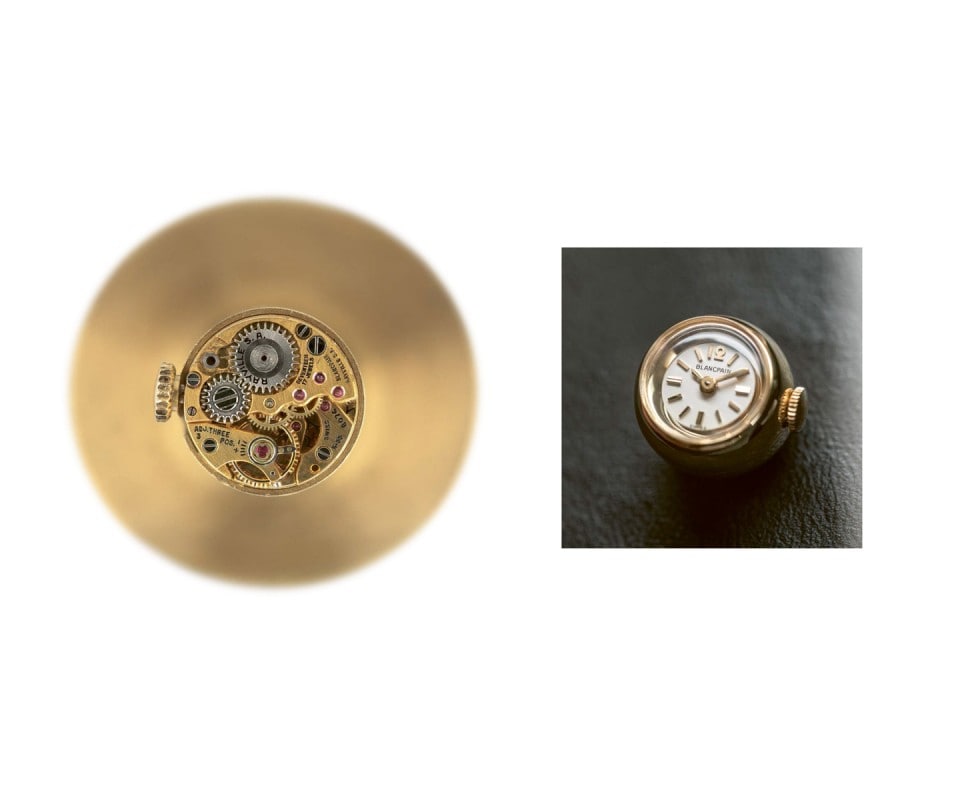
SPECIAL TALENTS are called upon in the servicing of the Ladybird. Its balance wheel is just 5 mm in diameter.
One of the great triumphs of the Betty Fiechter/Jean-Jacques Fiechter era of Blancpain was the Ladybird, which boasted the world’s smallest round movement. It was particularly distinguished not only by its petite diameter, but also by its robustness. Although another watch house debuted another small (rectangular) movement at around the same time, it traded size for fragility 2. There was no similar compromise in the Ladybird design. Nonetheless, only Blancpain’s most skilled watchmakers were employed in its production. Similarly, servicing of the Ladybird today calls upon rare skills in the vintage workshop.
2 Blancpain also developed a very small rectangular movement (the watchmaking term is baguette ), Caliber 59, after the debut of the Ladybird Caliber 550.
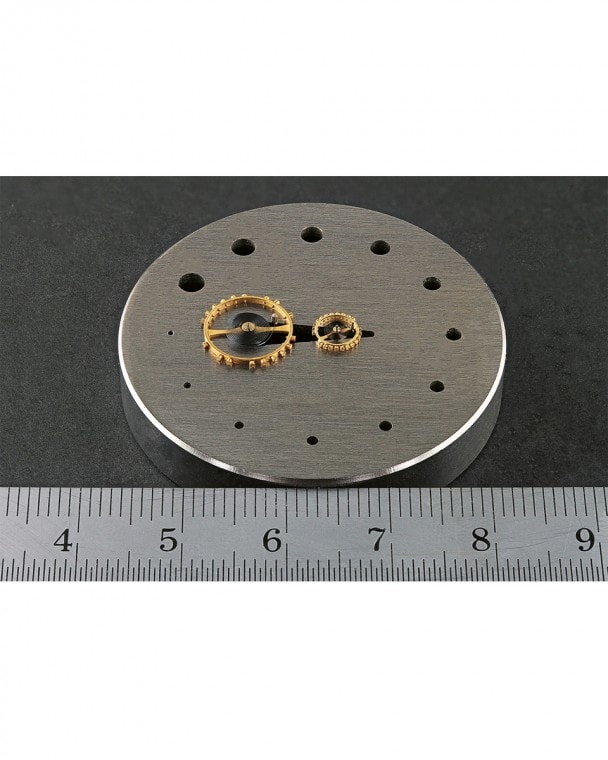
The greatest challenge in working upon the Ladybird movement is the balance wheel. Its 5 mm diameter is one of the smallest ever created in Switzerland. Indeed, it is so petite that manipulating the hairspring while it is nestled within the balance wheel, even using the finest sized tweezers, becomes almost impossible. When servicing calls for rectifying the shape of the hairspring, the watchmaker who specializes in Ladybird service removes the hairspring from its place inside the balance wheel. Once removed, the exceedingly demanding operation of restoring its flatness and concentricity can be accomplished. The hairspring is both soft and delicate, which calls upon the watchmaker to exercise great care and use a deft touch in adjusting its form. Once the latter is restored, the task is still not complete, as the watchmaker must gently re-insert the hairspring back into the balance without disturbing or altering its now carefully adjusted shape.
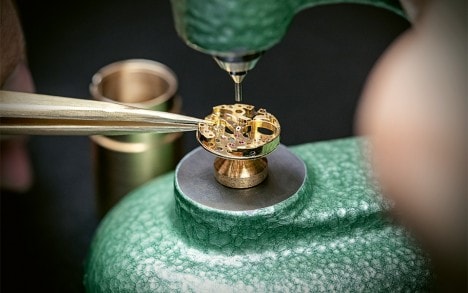
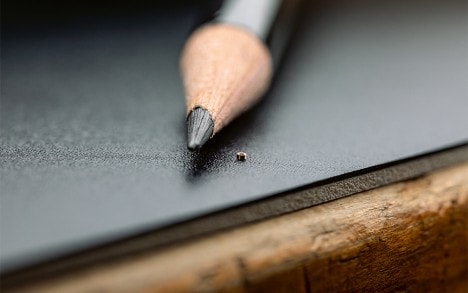
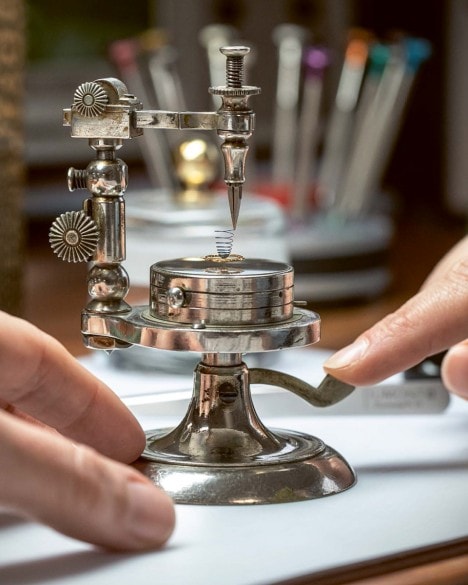
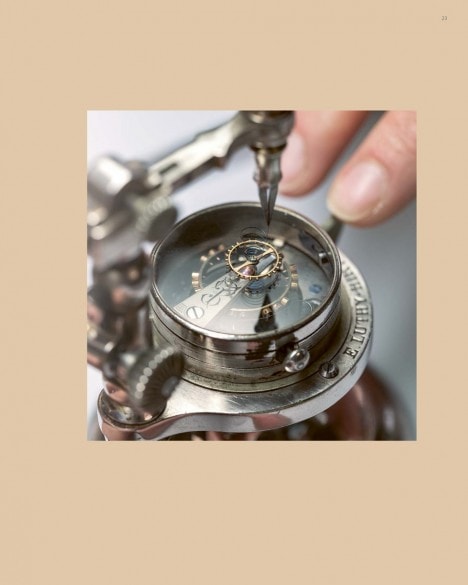
Calibration of the balance wheel and hairspring using traditional tools.
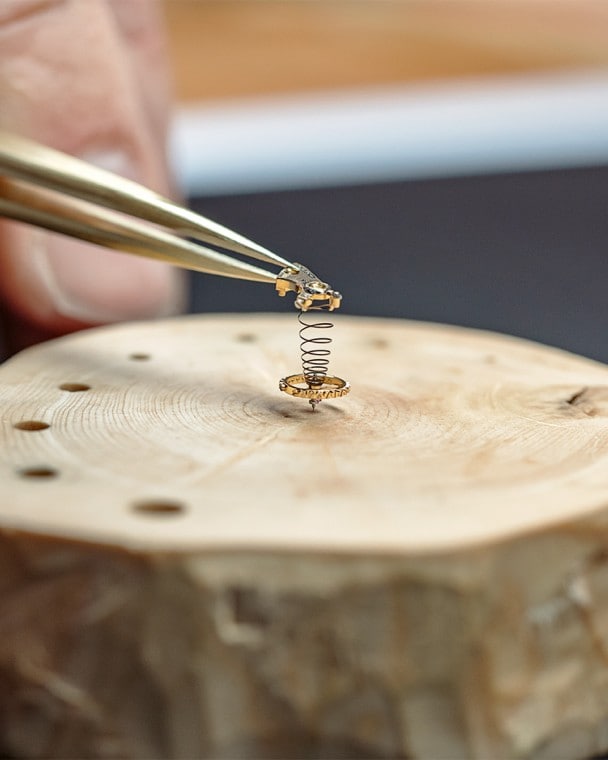
There is ONE THREAD that runs through many restoration crafts practiced in the vintage workshop: USE OF VINTAGE TOOLS .
The balance is not the only component of the Ladybird movement whose small size presents unusual challenges. The barrel itself, together with its mainspring, is exceedingly small. Although the mainspring is not as delicate as the balance’s hairspring, fashioning a new mainspring is vastly more challenging for the petite Ladybird barrel than one more conventionally sized. Not only are the dimensions reduced from that of standard mainsprings, but the material itself is softer and requires extra care in forming its shape and fitting it into the barrel.
There is one thread that runs through many of the diverse restoration crafts practiced in the workshop: use of vintage tools. Tempting as it is to think of this as a spiritual connection to these vintage timepieces, there is real substance behind the use of vintage tools. These tools, many a half century old, are ideally suited to the hand techniques practiced by the watchmakers, more so than many of the latest tools. Most importantly, fabrication using these tools yields components that conform to the standards and styles of the original so that the authenticity of the watch is preserved. So prized is the workshop’s store of vintage tools, that the members of the team have scoured Switzerland to obtain them, usually from retired watchmakers.
The last step required to conclude the restoration process involves verifying the regulation of the watch and – vitally important for the Fifty Fathoms watches – confirming the water resistance. For water resistance, actually the first step occurs at the beginning of the service process. The watchmaker carefully examines the case to determine if there has been any damage that might compromise the seal and cleans the case to remove any traces of corrosion. All aspects of the case are subject to scrutiny. The tube through which the crown stem passes is examined for wear. If there is any question as to its condition, a new tube will be hand-made using a vintage lathe. Similarly, attention is devoted to the case back seal, usually calling for replacement with a new rubber seal. Naturally, the crystal is also evaluated and – as seen above with Bert’s watch – replaced if it shows any signs of vulnerability.
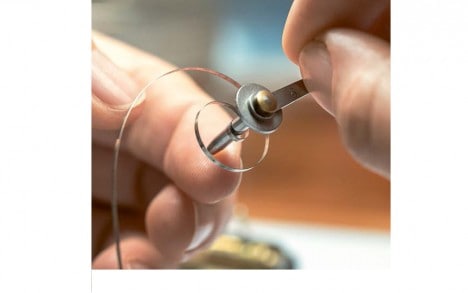
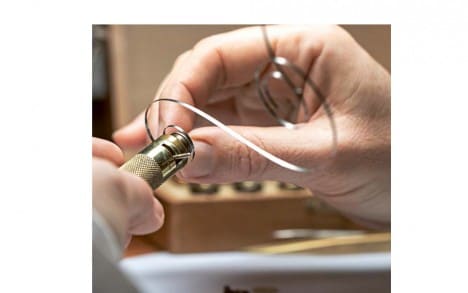
Winding of a new barrel mainspring.
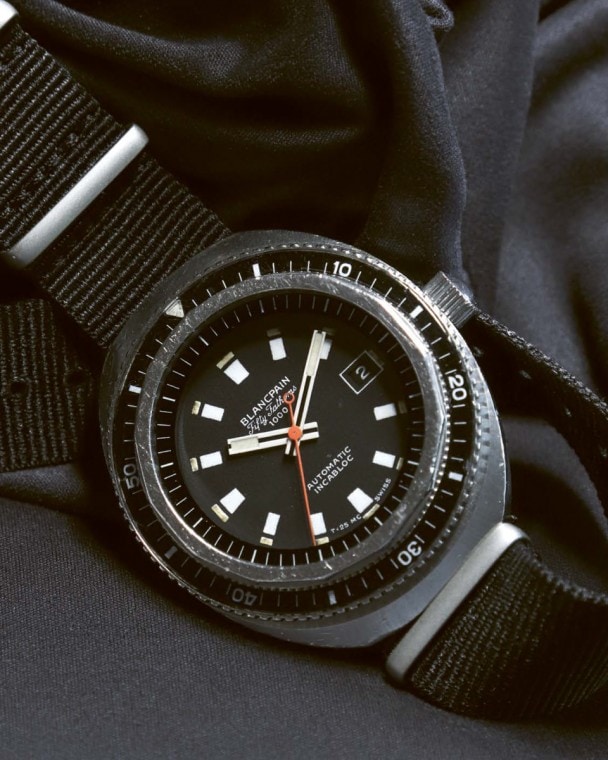
Every timepiece is tested before leaving the workshop. The TEST RESULTS are delivered to the owner along with the watch.
For Fifty Fathoms models, two tests are conducted after the case has been serviced and reassembled. First is a water test placing the case in a water vessel in a pressure environment of -.5 bar to detect if any bubbles are present; escaping bubbles would indicate a problem. Second is a pressure test done in a pressurized air chamber. This test examines whether there is deformation of the crystal under high pressure. Regulation tests include not only the running rate of the watch in different positions, but also the amplitude of the balance wheel swing and beat error. When the watch is delivered back to its owner, the results of the tests are included with the timepiece.
Blancpain’s CEO Marc A. Hayek rightly observed: “These watches live forever”. In the caring hands of the vintage workshop team, that future is assured.

